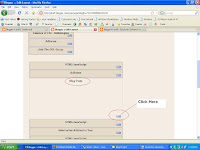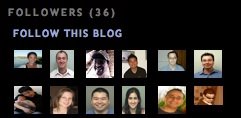What are feeds? I see "RSS", "XML", and "Atom" out there, but I don't know how I might use these links when I find them.
Feeds are a way for websites large and small to distribute their content well beyond just visitors using browsers. Feeds permit
subscription to regular updates, delivered automatically via a web portal, news reader, or in some cases good old email. Feeds also make it possible for site content to be packaged into "widgets," "gadgets," mobile devices, and other bite-sized technologies that make it possible to display blogs, podcasts, and major news/sports/weather/whatever headlines just about anywhere.
What Does This Mean?

You may recognize the universal
feed icon or these "chicklets" from your favorite websites, blogs, and podcasts. These icons represent content in any format - text, audio or video - to which you can subscribe and read/watch/listen using a feed reader.
What's that?
Why is This a Good Thing?
Technology evolution in online publishing has made it really easy to not only publish regular updates to web-based content, but also keep track of a large number of your favorite websites or blogs, without having to remember to check each site manually or clutter your email inbox. You can now streamline your online experience by subscribing to specific content feeds and aggregating this information in one place to be read when you're ready.
- Consumer Bottom Line: Subscribing to feeds makes it possible to review a large amount of online content in a very short time.
- Publisher Bottom Line: Feeds permit instant distribution of content and the ability to make it "subscribable."
- Advertiser Bottom Line: Advertising in feeds overcomes many of the shortcomings that traditional marketing channels encounter including spam filters, delayed distribution, search engine rankings, and general inbox noise.
Who publishes feeds?
Most of the biggest names on the web offer content feeds including
USATODAY.com,
BBC News Headlines,
ABCNews,
CNET,
Yahoo!,
Amazon.com (including a
podcast!), and many more. Google publishes feeds as part of many of our services; for example, you can get a feed of new items for any search you make in
Google News. In addition, hundreds of thousands of bloggers, podcasters, and videobloggers publish feeds to keep themselves better connected to their readers, listeners, admirers, and critics. Apple, through its iTunes Music Store, offers tens of thousands of audio and video
podcasts for download, each of which is powered by a feed.
How do I read feeds?
If you want to browse and subscribe to feeds, you have many choices. Today, there are more than 2,000 different feed reading applications, also known as "news aggregators" (for text, mostly) or "podcatchers" (for podcasts). There are even readers that work exclusively on mobile devices.
Some require a small purchase price but are tops for ease-of-use and ship with dozens of feeds pre-loaded so you can explore the feed "universe" right away. Free readers are available as well; a search for "Feed reader" or "Feed aggregator" at popular search sites will yield many results. A handful of popular feed readers are listed at the bottom of this page.
A typical interface for a feed reader will display your feeds and the number of new (unread) entries within each of those feeds. You can also organize your feeds into categories and even clip and save your favorite entries (with certain applications).
If you prefer, you can use an online, web-based service to track and manage feeds. Online services give you the advantage of being able to access your feed updates anywhere you can find a web browser. Also, upgrades and new features are added automatically.
How can I publish my own feeds?
If you have a website, blog, audio/video content, or even photos, you can offer a feed of your content as an option. If you are using a popular blogging platform or publishing tool like TypePad, Wordpress, or Blogger, you likely publish a feed automatically. Even other non-blogging sites like social photo-sharing service
Flickr offer feeds of content you produce that others can retrieve. There are also tools on the market that can help transform traditional web content into the right format for distribution.
FeedBurner's services allow publishers who already have a feed to improve their understanding of and relationship with their audience. Once you have a working feed, run it through FeedBurner and realize a whole new set of benefits.
And finally, some technical backstory...
The new method for easily distributing online content is often called a web feed and the technical format that makes it possible is called RSS, which stands for Really Simple Syndication, Rich Site Summary, and/or Rockdale, Sandow, and Southern (Railroad) if you trust the good folks at
AcronymFinder.com. RSS is based on XML, a widely used standard for textual information exchange between applications on the Internet. RSS feeds can be viewed as plain text files, but they're really designed for computer-to-computer communication.
We should point out that RSS is just one standard for expressing feeds as XML. Another well-known choice is Atom. Both formats have their boosters, and it doesn't appear that consolidation toward a single standard is imminent. However, most feed subscribers simply want fresh content and don't care at all about the underlying protocol. (FeedBurner helps publishers avoid this quandary with our SmartFeed service, which makes any feed format readable on any subscriber device.)
Resources:
Feed-Related Backgrounders
Popular Feed Readers
Applications
Online Services
Podcast Readers
Source: Google Support







 Click the "Add a Gadget" link that appears in the sidebar of your layout. You'll then see a popup window with all the different types of Gadgets you can add to your blog. (The Following widget will initially be experimental, so some users may not be able to add widget.) Look for the one called "Followers" and click on the blue "+" icon:
Click the "Add a Gadget" link that appears in the sidebar of your layout. You'll then see a popup window with all the different types of Gadgets you can add to your blog. (The Following widget will initially be experimental, so some users may not be able to add widget.) Look for the one called "Followers" and click on the blue "+" icon: You can then enter your desired title for your Following widget. Once you have chosen a title, click the orange "Save" button. You have now added the following widget to your blog!
You can then enter your desired title for your Following widget. Once you have chosen a title, click the orange "Save" button. You have now added the following widget to your blog! Readers can now go your blog and become a follower! Tell all your friends and grow your fan base. Once your readers become followers of your blog, their profile picture will be displayed in your Following widget.
Readers can now go your blog and become a follower! Tell all your friends and grow your fan base. Once your readers become followers of your blog, their profile picture will be displayed in your Following widget. A running count of your followers will be displayed next to the blog name on your dashboard.
A running count of your followers will be displayed next to the blog name on your dashboard. 











